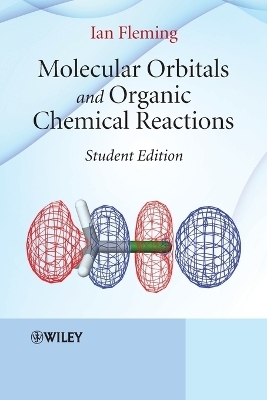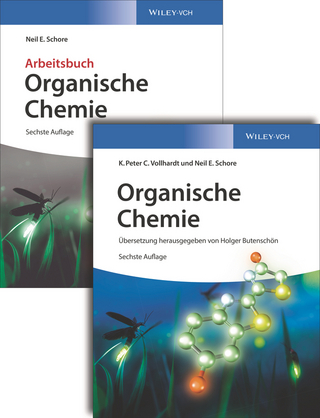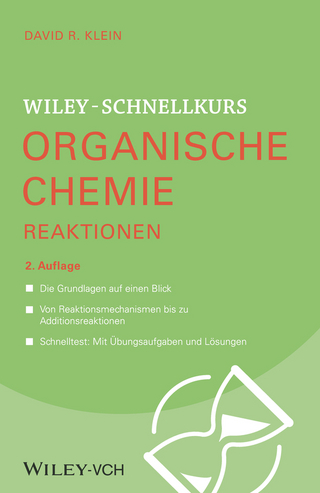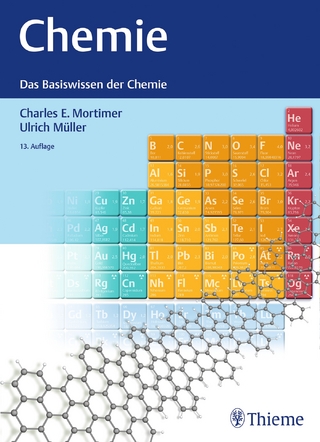
Molecular Orbitals and Organic Chemical Reactions
John Wiley & Sons Inc (Verlag)
978-0-470-74659-2 (ISBN)
Molecular orbital theory is used by chemists to describe the arrangement of electrons in chemical structures. It is also a theory capable of giving some insight into the forces involved in the making and breaking of chemical bonds—the chemical reactions that are often the focus of an organic chemist's interest. Organic chemists with a serious interest in understanding and explaining their work usually express their ideas in molecular orbital terms, so much so that it is now an essential component of every organic chemist's skills to have some acquaintance with molecular orbital theory.
Molecular Orbitals and Organic Chemical Reactions is both a simplified account of molecular orbital theory and a review of its applications in organic chemistry; it provides a basic introduction to the subject and a wealth of illustrative examples. In this book molecular orbital theory is presented in a much simplified, and entirely non-mathematical language, accessible to every organic chemist, whether student or research worker, whether mathematically competent or not. Topics covered include:
Molecular Orbital Theory
Molecular Orbitals and the Structures of Organic Molecules
Chemical Reactions — How Far and How Fast
Ionic Reactions — Reactivity
Ionic Reactions — Stereochemistry
Pericyclic Reactions
Radical Reactions
Photochemical Reactions
Slides for lectures and presentations are available on the supplementary website: www.wiley.com/go/fleming_student
Molecular Orbitals and Organic Chemical Reactions: Student Edition is an invaluable first textbook on this important subject for students of organic, physical organic and computational chemistry.
The Reference Edition edition takes the content and the same non-mathematical approach of the Student Edition, and adds extensive extra subject coverage, detail and over 1500 references. The additional material adds a deeper understanding of the models used, and includes a broader range of applications and case studies. Providing a complete in-depth reference for a more advanced audience, this edition will find a place on the bookshelves of researchers and advanced students of organic, physical organic and computational chemistry. Further information can be viewed here.
"These books are the result of years of work, which began as an attempt to write a second edition of my 1976 book Frontier Orbitals and Organic Chemical Reactions. I wanted to give a rather more thorough introduction to molecular orbitals, while maintaining my focus on the organic chemist who did not want a mathematical account, but still wanted to understand organic chemistry at a physical level. I'm delighted to win this prize, and hope a new generation of chemists will benefit from these books."
-Professor Ian Fleming
Professor Ian Fleming, Department of Chemistry, University of Cambridge Ian Fleming is an Emeritus Professor in the Department of Chemistry in the University of Cambridge, and an Emeritus Fellow of Pembroke College. He is the author of five textbooks: Spectroscopic Methods in Organic Chemistry (McGraw Hill, now in its 6th edition), Spectroscopic Problems in Organic Chemistry (McGraw Hill); Selected Organic Syntheses (Wiley), Frontier Orbitals and Organic Chemical Reactions (Wiley) and Pericyclic Reactions (OUP Oxford Chemistry Primer series).
Preface. 1 Principles.
1.1 The Orbital Model.
1.2 Mathematical Methods.
1.3 Basic Postulates.
1.4 Physical Interpretation of the Basic Principles.
2 Matrices.
2.1 Definitions and Elementary Properties.
2.2 Properties of Determinants.
2.3 Special Matrices.
2.4 The Matrix Eigenvalue Problem.
3 Atomic Orbitals.
3.1 Atomic Orbitals as a Basis for Molecular Calculations.
3.2 Hydrogen-like Atomic Orbitals.
3.3 Slater-type Orbitals.
3.4 Gaussian-type Orbitals.
4 The Variation Method.
4.1 Variational Principles.
4.2 Nonlinear Parameters.
4.3 Linear Parameters and the Ritz Method.
4.4 Applications of the Ritz Method.
Appendix: The Integrals J, K, J´ and K´.
5 Spin.
5.1 The Zeeman Effect.
5.2 The Pauli Equations for One-electron Spin.
5.3 The Dirac Formula for N-electron Spin.
6 Antisymmetry of Many-electron Wavefunctions.
6.1 Antisymmetry Requirement and the Pauli Principle.
6.2 Slater Determinants.
6.3 Distribution Functions.
6.4 Average Values of Operators.
7 Self-consistent-field Calculations and Model Hamiltonians.
7.1 Elements of Hartree–Fock Theory for Closed Shells.
7.2 Roothaan Formulation of the LCAO–MO–SCF Equations.
7.3 Molecular Self-consistent-field Calculations.
7.4 H€uckel Theory.
7.5 A Model for the One-dimensional Crystal.
8 Post-Hartree–Fock Methods.
8.1 Configuration Interaction.
8.2 Multiconfiguration Self-consistent-field.
8.3 Møller–Plesset Theory.
8.4 The MP2-R12 Method.
8.5 The CC-R12 Method.
8.6 Density Functional Theory.
9 Valence Bond Theory and the Chemical Bond.
9.1 The Born–Oppenheimer Approximation.
9.2 The Hydrogen Molecule H2.
9.3 The Origin of the Chemical Bond.
9.4 Valence Bond Theory and the Chemical Bond.
9.5 Hybridization and Molecular Structure.
9.6 Pauling’s Formula for Conjugated and Aromatic Hydrocarbons.
10 Elements of Rayleigh–Schroedinger Perturbation Theory.
10.1 Rayleigh–Schroedinger Perturbation Equations up to Third Order.
10.2 First-order Theory.
10.3 Second-order Theory.
10.4 Approximate E2 Calculations: The Hylleraas Functional.
10.5 Linear Pseudostates and Molecular Properties.
10.6 Quantum Theory of Magnetic Susceptibilities.
Appendix: Evaluation of µ and ε.
11 Atomic and Molecular Interactions.
11.1 The H–H Nonexpanded Interactions up to Second Order.
11.2 The H–H Expanded Interactions up to Second Order.
11.3 Molecular Interactions.
11.4 Van der Waals and Hydrogen Bonds.
11.5 The Keesom Interaction.
12 Symmetry.
12.1 Molecular Symmetry.
12.2 Group Theoretical Methods.
12.3 Illustrative Examples.
References.
Author Index.
Subject Index.
| Erscheint lt. Verlag | 1.1.2010 |
|---|---|
| Verlagsort | New York |
| Sprache | englisch |
| Maße | 153 x 231 mm |
| Gewicht | 472 g |
| Themenwelt | Naturwissenschaften ► Chemie ► Organische Chemie |
| Naturwissenschaften ► Chemie ► Physikalische Chemie | |
| ISBN-10 | 0-470-74659-9 / 0470746599 |
| ISBN-13 | 978-0-470-74659-2 / 9780470746592 |
| Zustand | Neuware |
| Haben Sie eine Frage zum Produkt? |
aus dem Bereich


